The post 2020 SAARC Conference: Leaders Collaborate to Combat COVID-19 appeared first on Nepali Sansar.
]]>Prime Ministers of Nepal, India, Bangladesh, Afghanistan, Bhutan, Maldives and Sri Lanka and a representative of the Pakistani PM participated in the first ever video conference on March 15, 2020.
All the leaders agreed to establish a joint response mechanism to stave off Coronavirus (COVID-19) threat in the region. They also agreed to evaluate the long-term implications of the coronavirus on the regional economy and find the best strategies for early recovery.
Initiating the conference from New Delhi, Indian PM Narendra Modi proposed a rapid response team of doctors and specialists, surveillance software, online training and common research mechanism at the disposal of the SAARC to combat the COVID-19.
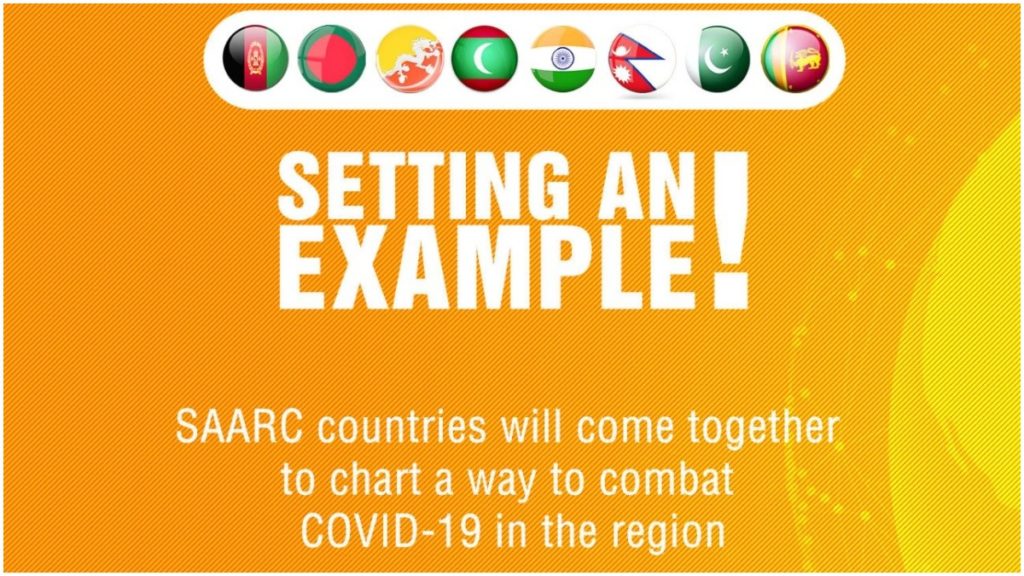
He also proposed to establish a ‘COVID-19 Emergency Fund’ and agreed to provide USD 10 million as initial contribution. He, then, requested the other leaders to voluntarily contribute to the fund.
Other countries including Nepal approved the ‘Emergency Fund’ proposal initiated by India and agreed to contribute to the fund.
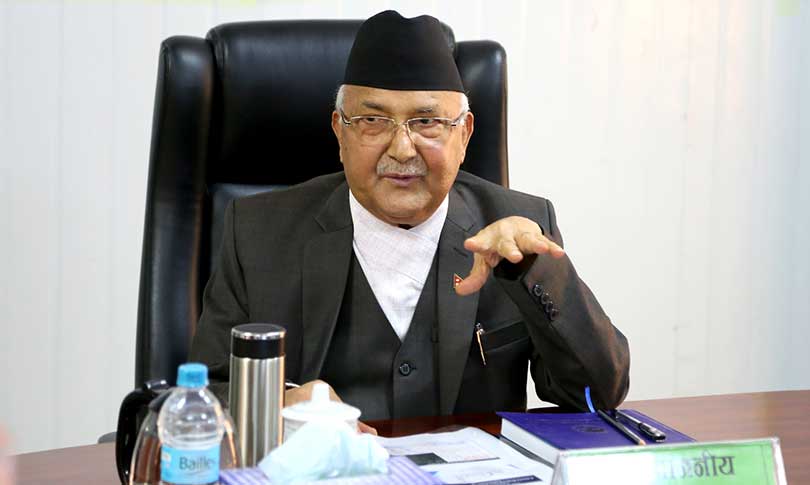
Meanwhile, Nepal PM KP Sharma Oli proposed to establish a SAARC emergency medical facility to deal with the identical health challenges in the region.
He shared the strategies and policies initiated by the Nepali Government to impede the coronavirus spread in the country.
“Even though we had detected one suspected case, the COVID-19 test proved negative. Yet, we are aware of the high risk of possible outbreak at any time. We remain alert to prevent it,” said PM Oli.
Likewise, all the other leaders expressed their opinions on the coronavirus outbreak.
This was for the first time the top South Asian leaders have participated in the SAARC summit since 2014 when the last summit took place in Nepal.
Coronavirus outbreak in SAARC countries
- India – 115 cases, 2 deaths
- Pakistan – 94 cases
- Afghanistan – 21 cases
- Sri Lanka – 18 cases
- Maldives – 13 cases
- Bangladesh – 5 cases
- Bhutan – 1 case
- Nepal – 1 case
Coronavirus Stories:
- US Government Provides Personal Protective Equipment to Contain Novel Coronavirus in Nepal
- Latest ‘Live’ Updates on Coronavirus (COVID-19) in Nepal
- Nepal Takes Drastic Measures to ‘Stop’ Coronavirus Spread
- Coronavirus: Nepalis to be Evacuated from Wuhan on Feb 15
- Readiness is the key to detect, combat spread of the new ‘Coronavirus’
The post 2020 SAARC Conference: Leaders Collaborate to Combat COVID-19 appeared first on Nepali Sansar.
]]>The post ‘Antimicrobial resistance (AMR) kills an estimated 700 000 people annually’ – WHO appeared first on Nepali Sansar.
]]>Across the world, AMR kills an estimated 700 000 people annually, including 230 000 from multi-drug resistant tuberculosis.
By 2050, unless urgent action is taken, AMR is expected to kill 10 million annually. Antibiotic-resistant bacteria are responsible for a substantial proportion of the AMR burden.
The emergence and spread of resistant bacteria is accelerated by the overuse and misuse of antibiotics in human and animal health.

The WHO South-East Asia Region is taking decisive action to combat AMR, which since 2014 has been a Flagship Priority.
All Member States have developed a national multisectoral action plan to address AMR. They are now implementing them.
Each Member State has signed on to the Global Antimicrobial Resistance Surveillance System, a key initiative that will advance AMR-related research. Region-wide, the Tripartite Collaboration on AMR, which comprises WHO, the Food and Agriculture Organization (FAO) and the World Organization for Animal Health (OIE), is addressing vulnerabilities in the human and animal health sectors, as well as in agriculture. Ensuring antibiotics are used rationally continues to be a core priority.
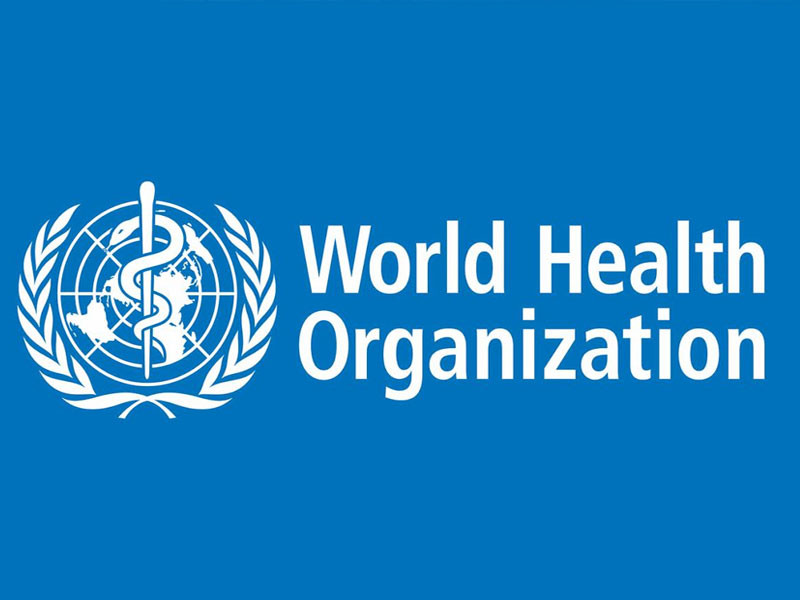
The Region’s progress must be sustained. It must also be accelerated – an outcome the new WHO-convened Regional Taskforce for AMR will help achieve. In pursuit of the Region’s Flagship Priority on AMR, as well as its quest to achieve universal health coverage, health authorities Region-wide should adopt and implement several high-impact interventions.
First, WHO’s AWaRe classification tool should be fully harnessed. The AWaRe tool groups antibiotics into three main categories – ‘Access’, ‘Watch’ and ‘Reserve’ – based on their strength and potential impact on AMR. By adopting the tool’s classification scheme, health authorities can more effectively monitor antibiotic consumption, align their essential medicines list (EML) with WHO’s Model EML, and update or establish treatment guidelines that increase the appropriate use of antibiotics. Each outcome will fast-track preventive efforts.
Second, increased focus should be given to strengthening infection prevention and control (IPC) in health care facilities. Clean water, adequate sanitation and essential equipment are all crucial to providing health care that is of adequate quality and which minimizes health care-associated infections. So too are health workers and facility staff that are trained in and implement IPC. All efforts should be made to ensure that health facilities from the primary level up are fit for purpose, and do not serve as AMR incubators.
Third, political leadership, advocacy and coordination on AMR should be scaled up. This is especially so when it comes to empowering all people to take responsibility for the future of antibiotics – the theme of this year’s World Antibiotic Awareness Week.
From promoting the appropriate prescribing of antibiotics to emphasizing the need to reduce antibiotic usage in the animal sector, leaders from all sectors should drive home an important point: The future of antibiotics is in our hands.
WHO is committed to supporting Member States as they continue to go from strength to strength in the battle against AMR. Together we can improve antibiotic treatment, increase access to antibiotics and reduce antimicrobial resistance. Together we can secure the future of our most precious drugs and rollback the global AMR crisis. We must act decisively. We must act now.
Source: World Health Organization, South-East Regional (SEAR) Office
The post ‘Antimicrobial resistance (AMR) kills an estimated 700 000 people annually’ – WHO appeared first on Nepali Sansar.
]]>The post Air Pollution: South Asia Should Make Concrete Plan, says Nepal Judge appeared first on Nepali Sansar.
]]>Addressing the Global Law Conference in Chandigarh University, Justice Mohan said rising pollution levels in New Delhi has caused concerns if the same would spread to Nepal, especially Kathmandu.
“The threat was diffused when the department of meteorology stated that the mountains should prevent it, but others of different opinion said, it actually depends on the direction that the winds take and their intensity,” Mohan said in a statement.
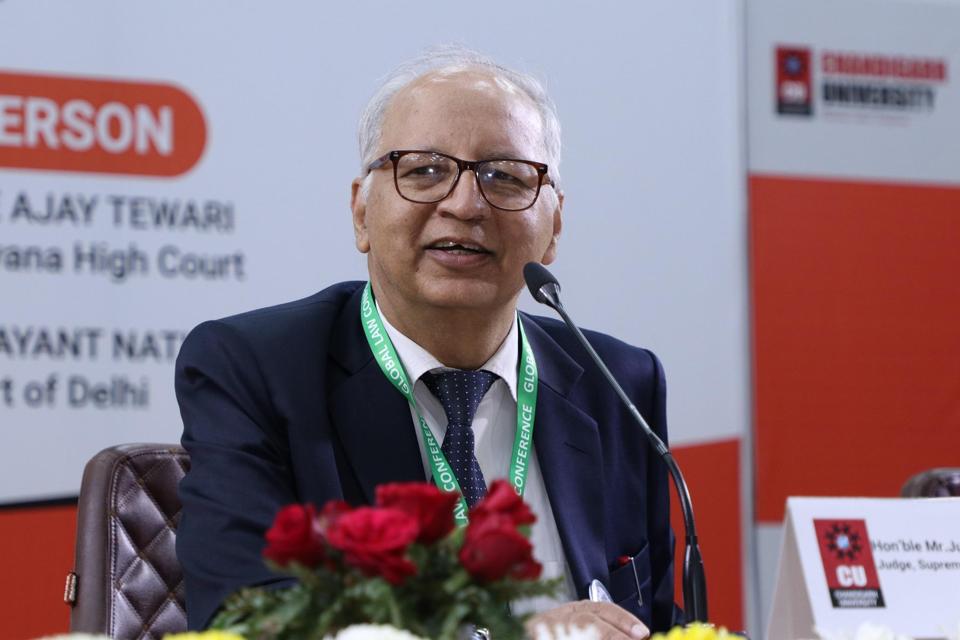
Speaking on the regional scenario, Mohan said Nepal is currently operating without any thermal power. Whereas, Indian Punjab High Court Judge Ajay Tewari said India is far from that and has 70% dependence on coal for power generation.
“South Asia has the darkest spots of air pollution and air quality in cities in India, Nepal, Pakistan and Bangladesh is lower than WHO standards,” says Mohan, urging South Asian nations to come together for a concrete action plan.
He said Nepal has been facing severe air pollution since years and it has worsened in the last couple of years.
“Last week when air quality caused a panic there was concern in Kathmandu as to whether the polluted air from Delhi would flow over to Nepal,” he added, citing intensity of the scenario.
Addressing the large gathering of national and international delegates, Justice Mohan said the Nepal Supreme Court had made many decisions pertaining to environmental degradation.
“However, it is a matter of concern that those orders are not making any impact on the ground. I think the time has come for us to break the narrow domestic wall and enforce partnership in the neighborhood for sustained and long-term action,” he suggested.
“The judiciary or government cannot do it by themselves without public participation,” says Tewari.
The post Air Pollution: South Asia Should Make Concrete Plan, says Nepal Judge appeared first on Nepali Sansar.
]]>The post Nepal Steps Up to Address Human-Wildlife Conflict in Kanchenjunga appeared first on Nepali Sansar.
]]>Towards this end, the three sides have initiated a regional dialogue in Siliguri with an aim to promote human-wildlife interface in KL, under the aegis of the Directorate of Forest, Government of West Bengal and International Centre for Integrated Mountain Development (ICIMOD).
The new initiative was set in the background of growing human-wildlife conflict, increasing wildlife-related crimes and harm to endangered species, as a means to address concerns and strengthen conservation mechanism.
India, Bhutan and Nepal share the Kanchenjunga Landscape (KL). Out of the total KL area of 25,086 sq.km., India has 14,127 sq.km share, followed by 5834 sq.km of Bhutan and 5125 sq.km of Nepal.
The Regional Policy Dialogue is currently underway in Siliguri from December 9 and will continue up to December 13, 2018.
“The representatives of the three countries are holding threadbare discussions to draw up ways and means of mitigating these problems. The measures will be both short term and long term,” says Soumitra Das Gupta, Inspector General, Ministry of Environment, Forest and Climate Change, Government of India.
The Bhutan delegation to the meeting is led by Chief Forestry Officer Tashi Tobgyel, while Gopal Prakash Bhattarai, Deputy Director General, National Park and Wildlife Conservation of Nepal is heading the Nepali delegation.
Besides, various other NGOs and police are also taking part in the workshop.
“Conservation of wildlife, reducing human-wildlife conflict and ending wildlife related crime has to be a well-coordinated effort between the member countries,” adds Animesh Basu of Himalayan Nature and Adventure Foundation, an NGO.
The Background
The three countries formed a 21-member joint research team, who embarked on a landscape journey during December 4-8, 2018 to different pilot sites of the three countries.
In interactions with the local administration and communities, the officials studied issues pertaining to human-elephant conflict and mitigation measures being practiced.
The dialogue and workshop is aimed at understanding regional, bilateral and local issues related to human-wildlife conflicts and wildlife crimes based on which options for addressing these issues will be identified.
This followed the formation of a regional dialogue to lay a clear road map for action points to achieve transboundary cooperation for addressing the human-wildlife conflict and wildlife-related crimes in KL.
South Asia’s Biodiversity Hotspot
Kanchenjunga Landscape is a biodiversity hotspot with around 7 million human population.
While the region has 169 varieties of mammals and 713 birds species, around 20 species of mammals and 23 species of birds are facing global threat.

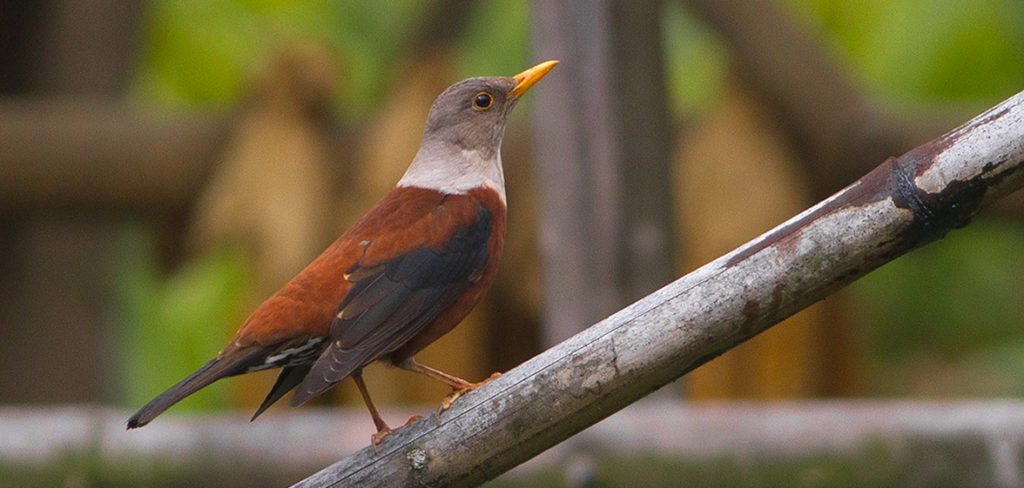
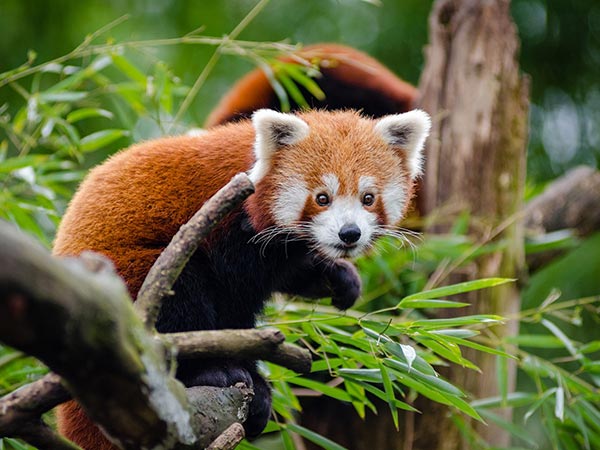
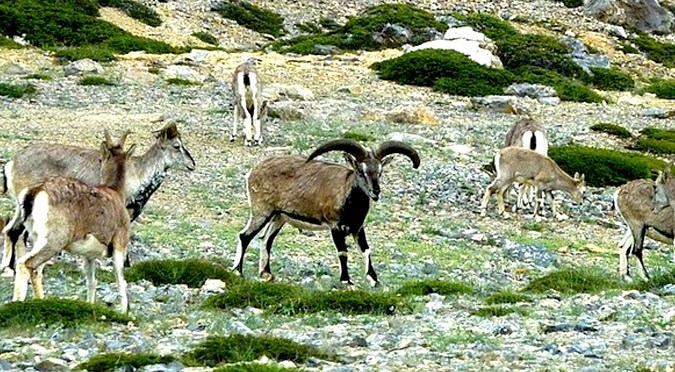
The post Nepal Steps Up to Address Human-Wildlife Conflict in Kanchenjunga appeared first on Nepali Sansar.
]]>The post Nepal’s Biggest Festival Season: Celebrating Dashain! appeared first on Nepali Sansar.
]]>Observed as a celebration of the victory of good over evil, the 15-day Dashain festival falls in the new moon and continues until the full moon in the Hindu month of Ashvin.
As per the Gregorian calendar, Dashain usually falls in the month of September or October and is the time when many Nepalese expatriates return to Nepal to observe the festival in their homeland. During Dashain, Nepal Government offices and many businesses remain closed for 7 days, making it easier for tourists to experience their joy in the country.
A 15-day Dashain
As the longest annual festival of Nepal, Dashain or Navaratri Parba or Bada Dashain marks the start of Nepal’s biggest festival season.
Marking the beginning of this Navaratri festival, devotees today worship Goddess Mahakali, Mahalaxmi and Mahasaraswati at the Dashain Ghar.
During Navaratri, thousands of devotees visit various shrines of Goddess Durga including Shobha Bhagawati, Naxal Bhagawati, Guheswori, Maitidevi, Bhadrakali, Sankata, among others across the country. Ghatasthapana, Fulpati, Maha Ashtami, Maha Nawami and Vijayadashami form the key events of nine-night Navaratri and for the entire festival.
- Ghatasthapana – Ghatasthapana, which falls on Aswin Shukla Pratipada (the first day of the bright half of the lunar calendar in the month of Aswin), marks the beginning of Dashain. As part of this ritual, devotees make a holy pot called Kalash, which will last until the end and is key to the entire festival.On this day, Diyo, Kalash and Lord Ganesh are worshipped as per the Vedic tradition. Apart from that, maize and barley seeds are also sown in a jar with soil and cow dung for successful germination of Jamara (barley sprouts).
- Fulpati – On the Fulpati day, which falls on seventh day of the festival, the Kalash, which is filled with holy water, banana stalks, jamara, sugar cane and tied with red cloth, is carried by Brahmans on a decorated palanquin under a gold-tipped and embroidered umbrella.
- Maha Ashtami – The worship of Goddess Durga begins from the first day of the festival and turns intense on the Maha Ashtami day, wherein devotees offer sacrifices to Goddess Durga and Kali. The night of this day is called ‘Kal Ratri’, the dark night.
- Maha Nawami – Dashain is symbolized by the victory of Goddess Durga over the demon Mahisasura. After nine days of fierce battle (representing Navaratri) with the demon, the Goddess finally kills Mahisasura on the Maha Nawami day. So, on this day, devotees offer slaughtered buffaloes as a sacrifice to the Goddess in the honor of her victory.
- Vijaya Dashami – Vijaya Dashami is the last major event of Dashain that continues for four consecutive days including the festival ending. This celebration marks the victory of good (Goddess Durga) over evil (demon). As a symbolism of nine-day intense battle between the Goddess and demon Mahisasura, devotees celebrate nine forms of Goddess on all the nine days of Navaratri.
The festival is also celebrated in remembrance of Lord Rama’s grand victory over demon-king Raavana. The fifteen days of celebration occurs during the bright lunar fortnight and ends on the Full Moon Day.
Celebrations in a Nutshell
On this auspicious day, people clean their homes and decorate them ornately as a gesture of invoking the divine mother to bless the family with fortune. Family members and relatives in different regions gather together for enjoying the reunion with their loved ones. Elders in the family mark the foreheads of the others with Tika, a combination of rice, red vermillion and yoghurt. Buying and wearing new clothes, flying kites, playing cards and playing on the swings and ferris wheels are some of the various customs indulged by kids and adults alike during this period.
Though Dashain is a very traditional Hindu festival, it is also observed by many Buddhists and people of other faiths. In comparative terms, Dashain festival is as significant to Nepalese as Christmas is to Westerners.
This period is also the peak tourist season, with clear skies and mild temperatures. By planning your trip to Nepal early, you can experience the great Nepalese culture and festivities with the local population.
Preparations on a Grand Scale
The 15 day-long Dashain is celebrated grandly across the country every year and a large number of Nepalese travel home during the festival time.
According to the transport department estimates, around 2-3 million people are expected to leave the Kathmandu Valley for the festival, annually. The Government has also planned big for the celebrations and announced Dashain receptions across the constituencies.
The festival welcomes high demand for animals such as goats and buffaloes that are slaughtered in huge numbers during the festival, as an offering to the goddess.
The post Nepal’s Biggest Festival Season: Celebrating Dashain! appeared first on Nepali Sansar.
]]>The post Nepal’s Biggest Festival Season 2018 appeared first on Nepali Sansar.
]]>Biggest Festival Season, as the name suggests, is the major celebration time for Nepal when it celebrates its biggest/longest festivals, usually the September-November period. The country receives huge traction globally during this period.
Nepal All Set for Its Major Festivals
- Dashain (October 10 – October 24, 2018)
- Tihar (November 07-09, 2018)
- Chhath (November 13, 2018)
Dashain
- Most important festival for Nepalese that falls in the month of Kartik
- A 15-day long festival that glorifies the victory of good over evil
- Symbolized by Goddess Durga killing demon Mahisasura
- Marks the remembrance of Lord Rama’s victory over demon-king Raavana
- Celebration occurs during the bright lunar ght and ends on the Full Moon Day
Tihar: Festival of Lights
- Second most important Nepali festival after Dashain
- A 5-day celebration dedicated to different animals, Crow, Dog, Cow and Oxen are worshiped, followed by the overall worshiping of Goddess Lakshmi, the main deity
- Goddess Lakshmi (the goddess of wealth) is worshiped with oil lamps, candles and colorful lights lit in every house
Chhath
- A festival that falls on the 7th day after Tihar
- Devotees observe fasts and make offerings to the Sun God by gathering at river banks
- Majorly celebrated in Terai region and in Rani Pokhari tank in central Kathmandu
Preparations on Pace
Public & Transport
- Public movement during Dashain is considered as the largest annual migration in Nepal
- Nearly 2.5 million leave the Kathmandu Valley for their homes during Dashain, every year
Arrangements by Government
- Major of educational and academic institutions announced holidays effective from October 10, 2018, while the government declared public holiday during October 16-20, 2018
- State-owned Nepal Food Corporation (NFC) allocated Rs 40.67 million to purchase the animals
- Government extended number of fair shops opened to ease the shopping of supply of daily essentials during Dashain and Tihar, and also directed officials to curb price hike on essential products
- Inspection officials directed to check food adulteration across the hotels and restaurants
High Rise Demand for Animals
- More than 75,000 mountain goats, sheep and he-goats arranged for slaughter at the Kathmandu Valley, with more than 500 transported since a week
- Around 100,155 live goats worth Rs 771 million imported from India for Dashain during mid-August to mid-September 2018
The post Nepal’s Biggest Festival Season 2018 appeared first on Nepali Sansar.
]]>The post Nepal Aviation Update: Nepal, India Negotiate for Better Air Connectivity appeared first on Nepali Sansar.
]]>The four routes that the sub-continent has agreed to make two-way include:
East Region
- Kathmandu-Biratnagar-Dhaka
- Kathmandu-Janakpur-Kolkata
- Kathmandu-Janakpur-Patna
West Region
- Kathmandu-Mahendranagar-Delhi
Now, Nepal carriers will be able to fly through the L626 route at heights ranging from 15,000-24,000ft. Following this, Nepali private air carriers such as Buddha Air will connect New Delhi with Nepalgunj.
This new development comes as a breakthrough for both nations, especially for Nepal that was concerned over easing traffic congestion in Simara Airport, which is a major destination for inbound flights in the country.
In this regard, the Civil Aviation Authority of Nepal (CAAN) and the Airport Authority of India (AAI) signed the MoU to conduct a safety assessment of the proposed routes. However, as per Nepal’s proposal, two vital entry points Nepalgunj and Mahendranagar are yet to be opened. India has agreed to probe further on the same by September 2018.
“Discussion on two vital entry points remained on hold, but overall the agreement is in fact a significant breakthrough,” said Deputy Director General of CAAN, Rajan Pokhrel.
“As per Nepal’s request for entry from the L626 route for high-level flights or flights above 24,000ft and another entry point from Nepalgunj, India agreed to make further examination by September 2018,” adds Pokhrel.
It may take a year before all the proposed air routes become functional.
The Background
Pending since 2014, the decision regarding the international air routes for Nepal didn’t take off due to several reasons.
First off, the decision took a halt when Nepal officials visited New Delhi in December 2016 to initiate negotiations, but returned with diverted attention over a public issue. Again, in February 2017, the two nations decided to form a technical team to resume talks, but ill-fate pursued when things didn’t materialize.
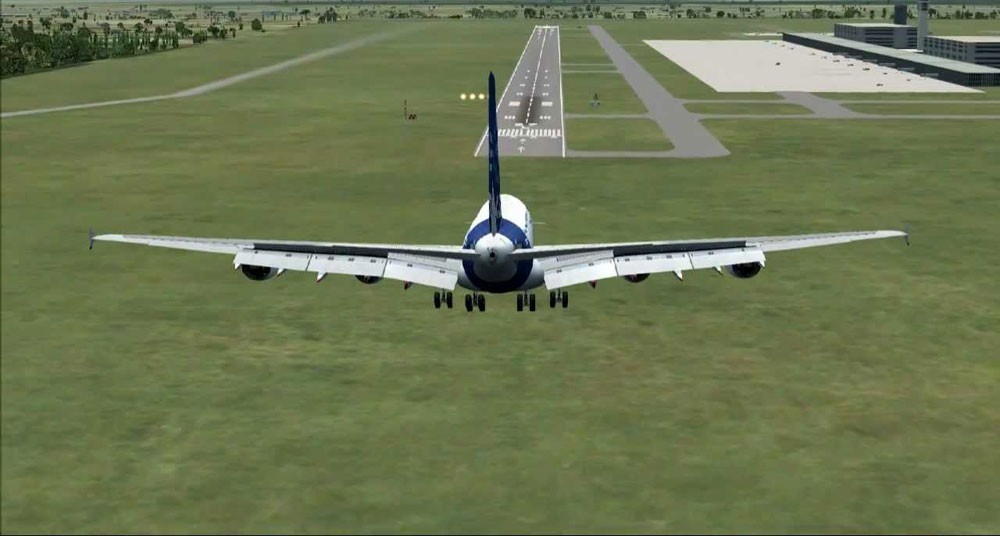
Finally, Nepal had welcomed a technical delegation from the Airports Authority of India (AAI) on June 14, 2018.
As part of the discussion, the Civil Aviation Authority of Nepal (CAAN) and the AAI team discussed the prospects of three key border routes that Nepal suggested to India, i.e., Janakpur in the east, Nepalgunj in the mid-west and Mahendranagar in the far west regions.
Speaking about the project, an important CAAN official said, “We don’t know about the mandate that the Indian delegation has been entrusted with by its government, but we are prepared to sign a MoU if the discussions yield a positive outcome.”
The two teams agreed on collating a report after the safety assessment was completed by both nations’ technical teams and published to the Aeronautical Information Publication (AIP).
AAI team to Nepal was be led by Anil Kumar Dutta, member of Air Navigation Services (ANS) and board member of AAI.
New Projects Awaiting Nod
The latest agreement is crucial to many other infrastructure projects in the pipeline that are financially and technically dependent on it:
International Airport at Nijgadh:
Nepal is planning for the new airport at Nijgadh. Estimated at a budget of USD 1.2 million and spread across an area of about 7,000 hectares, the Nijgadh international airport will ease congestion at the Tribhuvan international airport at Kathmandu.
Nepal is also focusing on the construction of two important airports, USD 80 million Gautam Buddha Airport in Bhairahawa (by 2019) and the USD 16 million airport in Pokhara (by July 2021).
Airfares Experience Hike with Fuel Surcharge
In another recent update, domestic airfares spiked high as airlines spiraled the fuel surcharge in view of the costs incurred on fuel purchase.
On June 5, 2018, the Airline Operators Association of Nepal (AOAN) signaled a go-ahead to its members to increase market prices.
However, airlines personnel say that customers will not be able to feel the heat as they would rarely have to pay in full on account of the price war towards the end of the travel season.
Fuel Charges Post Hike
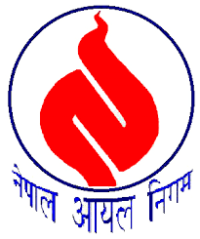 Nepal Oil Corporation (NOC) increased aviation fuel prices by Rs 5 per liter as compared with a two-year high of Rs 100 per liter.
Nepal Oil Corporation (NOC) increased aviation fuel prices by Rs 5 per liter as compared with a two-year high of Rs 100 per liter.
The fuel surcharge on the ticket is increased by Rs 175, making the fuel surcharge Rs 440.
Post the increase in fuel surcharge, a normal flight between Kathmandu to Dhangadhi will cost Rs 12,870 including a fuel surcharge of Rs 4,410.
On a Positive Note:
With the recent Prime Minister visits to both countries, Nepal and India have joined hands to accelerate the growth of both nations by addressing concerns like this airspace issue. Looking at the pace of things followed by the agreement on opening international air routes to Nepal, we are sure that more of such agreements will boost the aviation sectors of both the nations.
Read More:–
The post Nepal Aviation Update: Nepal, India Negotiate for Better Air Connectivity appeared first on Nepali Sansar.
]]>The post Nepal 2015 Earthquake: India, UN Agencies Step for Reconstruction Assistance appeared first on Nepali Sansar.
]]>As part of the agreement, India has agreed to provide USD 16.2 million to both the UN agencies, including USD 8.79 million to UNDP and USD 7.41 million to UNOPS.
This fund will be utilized for the construction of around 50,000 houses in Gorkha and Nuwakot, two of the districts badly-hit in the 2015 earthquake.
Through this fund, the UN agencies plans to provide all the needed socio-technical assistance related to rebuilding damaged sites for around 26,912 houses in Gorkha (by UNDP) and 23,088 houses (UNOPS) in Nuwakot.
Overall, this three-year project aims at ensuring the rebuilt houses are in line with the government norms and are quake-resistant.
Problems Faced So Far
As part of relief measures post the 2015 Gorkha earthquake, the Government of Nepal has called for the owner-driven approach for the renovation of quake-hit structures across the country and has had also announced USD 250 million aid and a USD 750 million Line of Credit for the same.
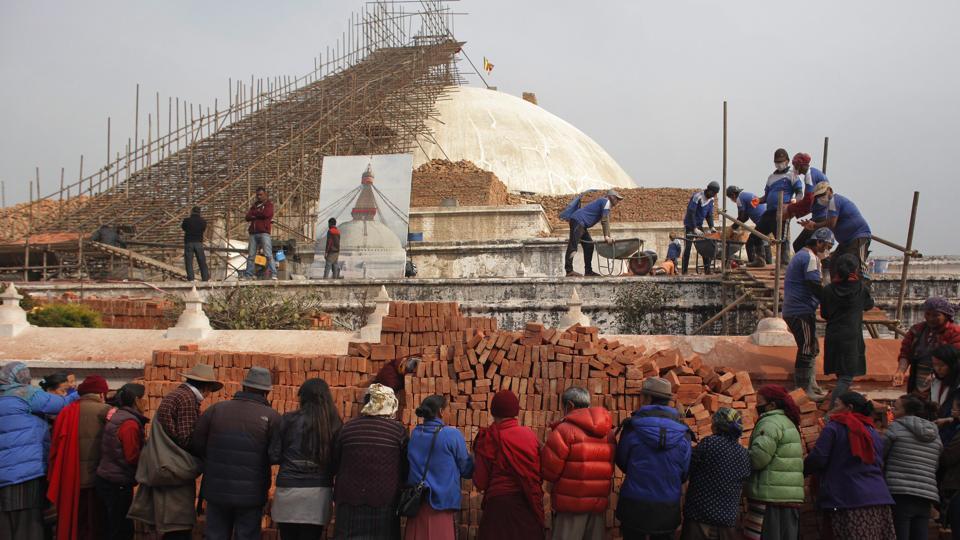
With this, socio-technical assistance for the procurement of related material which includes materials, technical support, finance, technologies, skill-set and land, among others.
This sort of confusion was witnessed in the reconstruction activity that has been underway since 2015, which saw a high number of householders seeking hands-on technical support, in-time funds, among others to build government-compliant and safer structures.
Now, these hassles are likely to be addressed under the new project which is promising the deployment of architects, masons, community facilitators and trained engineers for a constructive move.
“We look forward to making this partnership a success to ensure that the poor, vulnerable and marginalized households who need our support the most are able to reconstruct resilient houses speedily while leaving no one behind,” says Renaud Meyer, Country Director, UNDP Nepal.
Solution Ahead, Technical Assistance Vital
“We have learned from the experiences around the world that disasters like this tend to disproportionally affect socially and economically vulnerable people. These projects will address the special needs of those populations and make them more resilient to disasters in the future,” said UN Resident Coordinator Valerie Julliand at the project signing ceremony while also thanking India for its support.
Meanwhile, Indian Ambassador to Nepal Manjeev Singh Puri opined that this project will address the technical concerns of the householders and assist them with all the needed expertise for safer construction.
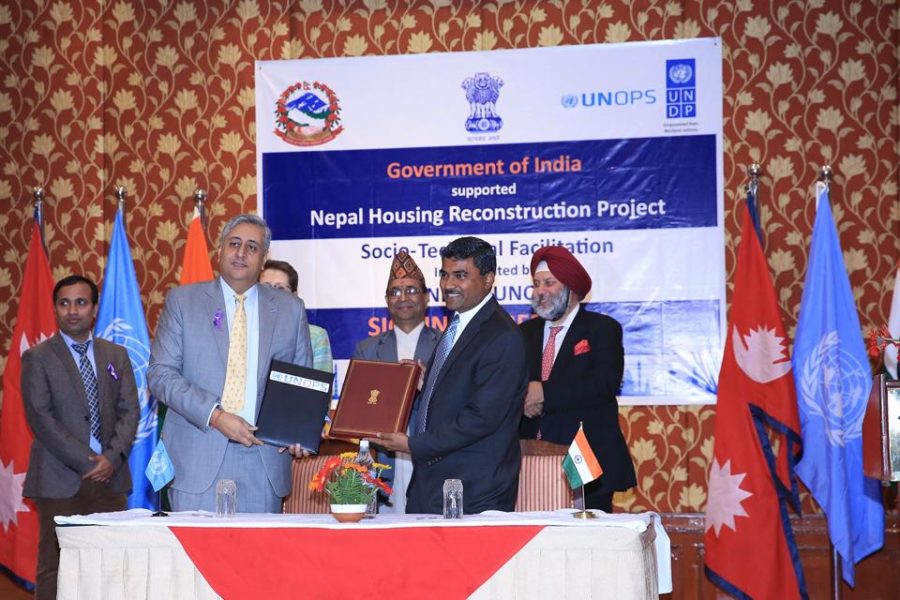
“The partnership agreement with UNDP and UNOPS will enhance the availability of technical knowhow and expertise to house owners in Gorkha and Nuwakot districts to reconstruct their homes with earthquake-resilient features,” reads Puri’s statement.
Sanjay Mathur, UNOPS Asia – Regional Director was also happy at the favor extended by the Government of India and Nepal towards helping the needy.
He said, “With the generous assistance of the Government of India and in close partnership with the Government of Nepal, we will all be working together to support those families in greatest need, safely rebuild their homes and their lives. This is critical to sustainable development and we are proud to be a part of this effort.”
This three-year project will be carried out jointly by the Embassy of India, Kathmandu, Nepali National Reconstruction Authority, Central-Level Project Implementation Units of the Ministry of Federal Affairs and General Administration Nepal, Nepali Ministry of Urban Development and all the related local municipalities, government offices and rural municipalities in the two districts.
The post Nepal 2015 Earthquake: India, UN Agencies Step for Reconstruction Assistance appeared first on Nepali Sansar.
]]>The post New Nepali Government Keen on Foreign Policy appeared first on Nepali Sansar.
]]>While the date of formation of the new government is yet to be announced, the left alliance came up with some announcements on policies to be implemented under the left-led new Nepali Government (yet to be formed)
In a recent announcement, the left alliance informed that the new Nepali Government will maintain Nepal’s diplomatic relations with neighboring nations based on independent foreign policy.
“As per the directions made by the Nepali Constitution, we will develop the relation with friendly nations, especially the neighboring countries, international unions and organizations, on the basis of independent foreign policy,” the Communist Party of Nepal-Unified Marxist Leninist (CPN-UML) and Maoist Centre (CPN-MC) said in a statement on December 17, 2017.
In response, a resident of Lumbini said, “I expect a policy that will enhance Nepal’s relationship with neighboring countries India and China. Growth of Nepal is not possible without good relation with India due to geopolitical situation. But in the name of enhancing relation, Nepal should not bow to any other countries.”
These statements by the new Nepali government gain significance in view of recent statements by Nepal’s close bilateral partners on the conclusion of Nepal’s legislative elections 2017.
Nepal Is a Good Friend: Japan
Meanwhile, the Japanese Ambassador to Nepal Masashi Ogawa said that Nepal is a good friend to Japan and expressed Japan’s willingness to support Nepal’s development.
“Japan is a good friend of Nepal and it has been providing support to Nepal’s efforts for economic, social, cultural and educational development,” said Ogawa in his address at a recently-held event in Kathmandu.
India Important for Nepal
India also congratulated Nepal on successful completion of its most-awaited parliamentary and provincial elections.
A statement by Indian External Affairs Ministry Spokesperson read about India’s keenness to support Nepal in its all-round development.
India expressed willingness to work with the newly-elected government with regard to taking ahead its close and multi-faceted ties with Nepal in various sectors.
“The Indo-Nepal ties are not just about government-to-government relations, but about people-to-people ties. India will work with any party that comes to power in Kathmandu. Similarly, the Nepal of PM will work with Delhi irrespective of his ideology. India remains a key factor in Nepal’s politics, society and religion and this fact cannot be ignored,” said a Nepal-focused political expert earlier this month.
US Hopes Responsive Governance
Meanwhile, congratulating Nepal on the conclusion of its historic polls, the United States Government hoped that the recent election would set a stage for new responsive governance in Nepal that stands by rule of law, transparency and inclusivity.
“The election of representatives at all levels of government should set the stage for responsive governance based on the principles of transparency, inclusivity, and rule of law,” read a statement by State Department Spokesperson Heather Nauert.
In this regard, Nauert expressed the US Government’s willingness towards working with the new Nepali Government.
The post New Nepali Government Keen on Foreign Policy appeared first on Nepali Sansar.
]]>The post 2017, A Game-Changer Year for Nepal appeared first on Nepali Sansar.
]]>While the three-tier local body polls were held on May 14, June 28 and September 19 of the current year, the most-awaited general elections for electing members for the provincial and parliamentary seats are currently underway in two phases (November 26 and December 7, 2017).
These two elections are important for Nepal for two reasons: One being the socio-political transformation that the Nepali citizens have been waiting for since around two decades and the other being the country witnessing these many number of elections in a single year for the first time in its history.
Local Body Polls
Nepal’s local body polls 2017 drew a huge response from the governments across the world, such as Japan, US, India, among others, which acclaimed that as Nepal’s major step towards its long-awaited development process.
“This is a significant progress towards the implementation of the constitution that was promulgated in 2015,” said the Government of Japan.
“Most importantly, Nepal held the first local elections in 20 years – a significant milestone for your democratic government,” stated the US President Donald Trump.
Upon the completion of local body elections, the United Nations had also hailed Nepal for its efforts towards institutionalizing democratic process through local body polls.
The local body election that concluded with the final phase on September 19, 2017 left its mark registering a record voter turnout.
Provincial and Parliamentary Polls
The intense election heat that began with the local body polls at the start of the Nepal new year 2074 in May continues till date currently in the form of the country’s general provincial and parliamentary polls that are underway.
This legislative election, also termed as the general election, began with the first phase polls that was conducted on November 26, 2017 across 37 constituencies of the House of Representatives and 74 provincial assembly constituencies.
The final phase is slated for December 7, 2017 and will cover 45 districts of the Tarai and hill areas for electing a total of 128 seats for the House of Representatives and 256 provincial assembly seats.
Nepal legislative election 2017 is being seen as a game-changer for Nepal as the country is most likely to witness an end to its long political and social turmoil along with the formation of new constitution.
The post 2017, A Game-Changer Year for Nepal appeared first on Nepali Sansar.
]]>